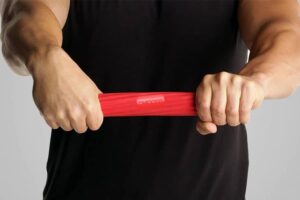
Apr 30, 2024
Lateral epicondylosis, also known as tennis elbow, is a common elbow injury we often see as Physiotherapists. It can be frustrating because it usually happens in the arm you use the most and doesn’t respond well to traditional treatments that are still commonly used, despite recent evidence showing they’re not effective.
There are different ways to deal with tennis elbow. Some people rest their arms, while others exercise them. In this article, I’ll talk about why physiotherapy can help with tennis elbow and cover:
– What exactly tennis elbow is
– Why it causes pain
– How we diagnose it
– Why cortisone injections aren’t a good idea
– The right way to ease tennis elbow pain
– What a good long-term treatment plan involves
WHAT IS TENNIS ELBOW?
Tennis elbow used to be called lateral epicondylitis, but we now call it lateral epicondylosis because of new evidence. It might seem like a small change, but it affects how we treat this wrist extensor overuse injury. Lateral epicondylitis means inflammation, while lateral epicondylosis means degeneration.
This means we should focus on treating the degeneration of the common wrist extensor tendon at the elbow, rather than inflammation. These treatments are very different.
CAUSES
Tennis elbow mostly happens because you use your forearm muscles too much on one side, especially during activities like tennis or repetitive movements. Like most tendon injuries, too much strain on the tendon leads to degeneration happening faster than it can heal, causing tennis elbow.
As we mentioned before, recent evidence shows inflammation isn’t the main issue here; it’s the degeneration of the forearm wrist extensor tendon. So the most painful movements usually happen when you’re holding something with your wrist extended, like turning a doorknob or using keys. This also weakens your grip strength, a common symptom of tennis elbow.
Tennis elbow affects a wide range of people, from tennis players to office workers to manual laborers. In fact, many people experience some form of tennis elbow pain at some point.
STEROID INJECTIONS FOR TENNIS ELBOW
Cortisone injections have been commonly used to treat chronic tennis elbow pain. But now we know they’re not very effective for this injury. Injecting cortisone into the painful degenerated tendon can actually weaken tendons and make the degeneration worse, causing more elbow pain.
TENNIS ELBOW PAIN RELIEF TECHNIQUES
When dealing with tennis elbow, it’s important to avoid making the problem worse. But often people are just told to stop doing things they need or enjoy.
Instead, it’s better to limit or change the activity that’s causing the problem. This can mean:
– Doing the activity less often
– Using smaller objects during the activity, like using a smaller grip or racket in tennis
– Massaging the forearm muscles can help with pain, but it’s only a short-term fix and doesn’t solve the tendon degeneration
– Applying heat or ice can also help with pain, but it’s only a temporary solution
TENNIS ELBOW PAIN RELIEF EXERCISES
Strengthening exercises are the best way to reduce elbow pain and reverse tendon degeneration in the long term. Eccentric exercises are particularly helpful, where the muscle lengthens under tension instead of contracting.
- Flexbar Eccentric Exercise – The flexbar has been designed specifically for tennis elbow pain. The unique nature of the design allows you to load the wrist extensors through their natural movement, using your opposite hand as a counter lever, before slowly eccentrically loading the painful arm. When performing this exercise you would ideally have a very slow 6 second eccentric contraction. It is expected that there will be a tolerable level of pain and discomfort whilst performing this exercise, which is not harmful to the wrist extensor tendon.
- Eccentric Wrist Curl Exercise – Holding a small dumbbell with your palm facing the ground, begin in the fully extended wrist position before allowing a 6 second eccentric contraction as you lower the weight. It is also expected that there will be a tolerable level of pain and discomfort whilst performing this exercise, which is not harmful to the wrist extensor tendon.
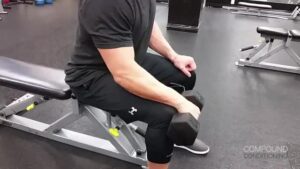
Other Effective Treatments for Tennis Elbow
Extracorporeal (outside the body) Shockwave (high energy sound waves) therapy is a non-invasive treatment designed to treat some causes of chronic musculoskeletal pain without the need for injections, medication or surgery. It has been shown in studies to be effective, particularly in issues related to tendons.
TIPS & ADVICE
It’s important to find a Physiotherapist who knows how to treat tennis elbow and can create a plan tailored to you.
Don’t stop the activity completely, as tennis elbow is a tendon injury that needs some loading to heal.
And don’t rush back into normal activities too quickly. It’s common for people to feel better and then overdo it, ending up back in pain.
FREQUENTLY ASKED QUESTIONS
How is tennis elbow diagnosed?
Tennis elbow is typically diagnosed by a Physiotherapist through a thorough medical history and musculoskeletal examination of the painful elbow and wrist extensors. The diagnosis is not required to be confirmed by an orthopaedic scan.
What does tennis elbow feel like?
Tennis elbow can begin by feeling like a dull ache on the outside of the elbow and, if untreated, it can progress to a sharp pain on the outside of the elbow that can radiate down the arm towards the thumb as the lateral epicondylitis progresses.
Why isn’t my tennis elbow pain getting better?
The medical terminology for tennis elbow is lateral epicondylosis, which means degeneration of the tendon on the outside of the arm at the elbow. Tendons have a poor blood supply and degenerated tendons will not heal without a progressively loaded treatment protocol designed by a Physiotherapist.
What are the early warning signs of an injury?
The early warning signs of tennis elbow are pain on the outside of the elbow at the start of an activity that seems to dissipate as you warm up. Due to this insidious onset, many people ignore the early warning signs and continue to aggravate the degeneration of the tendon, resulting in a chronic overuse injury.
When should you use a tennis elbow brace?
A tennis elbow brace can be used to help limit the continued overuse injury of the wrist extensors causing the elbow pain. It is important to note that these braces will only decrease pain in the short term by limiting movement, rather than aiding in the healing of the degenerated tendon.
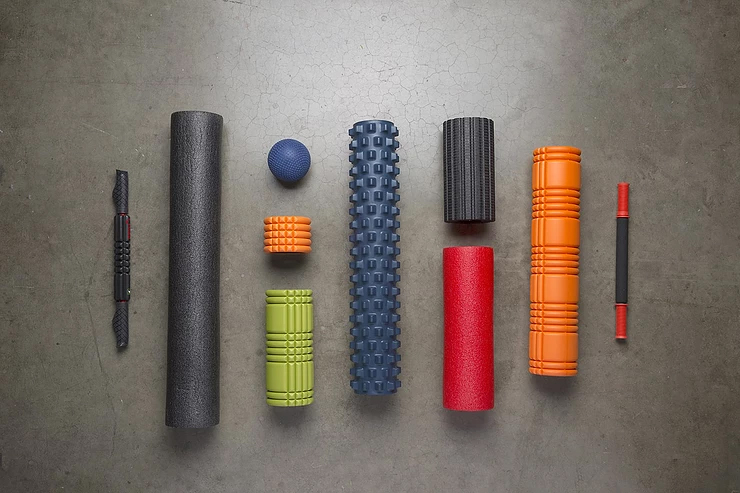
Apr 9, 2024
How to get the best out of your foam roller this marathon season….

With the marathon drawing ever closer, high volumes of training will be leading to better times and improved performance. However, with this increased recent training load comes a build‐up of stress on the body, muscles and joints.
Very simply put, physios and soft tissue therapists use their hands to apply mechanical forces to the muscle tissues. The aim of this is to promote tissue health, improve flexibility, clear waste products, and breakdown and improve the alignment of scar tissue. This mechanical force can also be used to ease tight nodules in the muscles known as ‘trigger points’ or ‘knots’ that can often be a source of local or referred pain in the musculoskeletal system.
While many people may have the resources to get this treatment done by a professional, the rest of us weekend warriors do have another effective option at our disposal…… ‘Self Myofascial Release’ better known as, ‘Foam Rolling’.
Foam rolling has quickly become a staple in training programs worldwide, from elite sports teams who use it as part of their warm‐up before training sessions, to individuals who just want to use it to improve flexibility or relieve pain from high volumes of training or being desk bound at work. Unfortunately there is still a dearth of research in existence to back up its effects but its wide use in professional sport is testament to the benefits it can have in a real clinical setting.
What should I use?
Rollers of various densities and diameters are available today. Beginners will generally need to start with the softer, larger diameter foam roller as this will be more tolerable at first. Having used this for a while and as your tissue quality improves; denser, firmer options will be needed to continue to be as effective. These can be hollow rollers such as The Grid TM (below) with a tough plastic tubing covered by a softer foam. As some of these options can be expensive, the DIY crowd can make their own by getting some PVC piping from their local hardware store and wrapping it in a Pilates style matt!!

One final option for targeting very specific areas such as the underside of the foot or the glute is a tennis ball. When this becomes easy then it can be progressed to using a cricket ball as it is denser and will increase the force applied to the tissue.
How long do I spend rolling?
There is no hard and fast rule for this as it largely depends on the quality of your muscle tissue to begin with. If you are just starting out there is every chance that your tissue quality will be poor or so you will need to do it more, but as this improves and you become more familiar with the techniques and targeting problem areas, the amount of time you’ll have to spend on the roller will decrease. A general guide would be to spend one or two minutes on a given area such as one calf muscle for example and just increase that if some areas are particularly tight (go easy at first as this may cause some muscle soreness initially if too much pressure is applied). Obviously the key is to spend most time on the tightest tissues.
It is worth noting that as this is a method of making the muscle tissue more supple and less dense, this is a fantastic time to get some stretching in directly after rolling to optimise tissue length and flexibility. Spending 30 seconds on each stretch will give the best chance of increasing muscle length.
So how do I target specific muscle groups?
Targeting specific areas is all about positioning and using your own body weight to create the force needed to press on certain ‘trigger points’ and to roll out adhesions and tight areas effectively. In order to expose certain knots as in the glutes for example, putting the muscle on gentle stretch will greatly improve your ability to locate and treat problem areas.
When rolling one area such as the IT band for example, you may feel some referral in other areas such as down the outside of your leg. This is normal and just means that you are rolling on an ‘active’ trigger point. If the sensation is too unpleasant, just ease off on the pressure.
Glutes and piriformis

Sit on the roller and go into a stretch position for the glute. For the right side, put your right foot up on your left knee, using your right hand to support your weight behind. Let your weight onto the roller as you roll back and forth tilting your pelvis and finding different tight areas.
IT Band

Lie with the side of your thigh resting on the foam roller with the roller perpendicular to your body. Use your hands and the non‐involved leg to support you, and adjust the amount of body weight that you can comfortably tolerate. Then roll your leg up and down the roller focusing on the upper third of the ITB, then the middle third and so on, all the while locating and targeting knots.
Quads

Perhaps one of the most simple to areas to target, simply lie on your front with your quads on the roller. Again your body weight will immediately flag up tight areas of the quad that you may not have known about before. Similar to the IT band focus on the area 1 third at a time and rotate slightly every now and then to expose the sides of the muscle also.
Hamstrings
The hamstrings tend to be a deeper group of muscles so you may have to apply more weight to target areas of this. Lie with your hamstrings on the roller, support yourself with your hands and roll and rotate on small areas at a time to effectively improve tissue density. Just cross a leg to increase the pressure.

Groin (adductors muscles)

This is the trickiest area to treat as it is difficult to apply enough pressure. As shown, try to have the roller perpendicular to the thigh, and shift your weight onto the roller.
Calves

While this can be a sensitive area at first, it can improve well with enough attention. Both calves can rest on the roller at first. When more pressure is needed, simply rest one leg on the other to increase the weight going through the target area. For more specific points a tennis ball or lacross ball can also be used.
Peroneals and Tibialis Anterior (shin muscles) Identical to rolling the IT band but just lower down. Alternatively you can also roll on a tennis/cricket ball to target more specific areas.

Plantarfascia (sole of foot)
This is where the tennis ball or golf ball comes into its own. Simply apply pressure through the underside of the foot onto the ball and roll around to expose tight areas. Again take it one bit at a time and apply as much pressure for a strong but comfortable treatment sensation. The effects of a minute or two of treatment can be felt immediately when taking a few steps with bare feet as the foot will be left feeling much looser and supple. If you think you are suffering from plantar fascitis then rolling your foot on a frozen bottle of water can provide some soothing pain relief but again only apply as much pressure as is comfortable.
So that ends this particular blog on rolling. At the end of the day, while no roller can out do the hands of a physio or other hands-on therapist, a good rolling and stretching regime can be of enormous benefit to your training overall while decreasing your chances of injury further down the line. It may not be the most comfortable at first, but it will have you feeling and moving better within weeks.
For any further info or advice don’t hesitate to give us a call or pop in for a chat.
In the run up to the London Marathon we are hosting an Express Massage Week from 15-19th April
Enjoy a 30 minute sports massage for £38 (usually £45). Book Online HERE
Or Get in Touch: 01276 916346 Email: info@physicahealth.co.uk

Apr 4, 2024
Pregnancy is a beautiful journey filled with anticipation and joy, but it also comes with its fair share of aches and pains. As your body undergoes incredible changes to accommodate new life, discomfort such as back pain, pelvic pain, and muscle tension can become a daily challenge. However, there’s no need to suffer in silence. At Physica Health, conveniently located near Camberley in Bagshot, we specialise in women’s health and pregnancy physiotherapy, offering tailored solutions to address your specific needs.
Understanding Pregnancy Aches and Pains
From the moment of conception, your body begins a remarkable transformation to support the growth and development of your baby. Hormonal changes, weight gain, and shifts in your center of gravity can all contribute to musculoskeletal discomfort during pregnancy. Common complaints include:
– Back Pain: As your belly grows, the curvature of your spine changes, placing strain on your lower back muscles.
– Pelvic Pain: The hormone relaxin loosens ligaments in preparation for childbirth, which can lead to instability and discomfort in the pelvic region.
– Muscle Tension: Increased stress on muscles, particularly those in the neck, shoulders, and hips, can result in tightness and soreness.
These aches and pains are not uncommon, affecting many expectant mothers to varying degrees. However, they should not be dismissed as merely a normal part of pregnancy. Addressing these discomforts early on can improve your overall well-being and make the journey to motherhood more enjoyable.
The Role of Pregnancy Massage in Camberley
Pregnancy massage is a safe and effective way to alleviate the physical discomforts associated with pregnancy. At Physica Health, our trained Physiotherapists incorporate prenatal massage techniques that are specifically designed to address the unique needs of expectant mothers. Here’s how pregnancy massage can benefit you:
– Pain Relief: Gentle massage techniques can help reduce tension in the muscles, easing back pain and promoting relaxation.
– Improved Circulation: Massage increases blood flow to the muscles and tissues, providing relief from swelling and enhancing nutrient delivery to both you and your baby.
– Stress Reduction: Pregnancy can be a time of heightened stress and anxiety. Massage therapy promotes relaxation, reduces stress hormones, and encourages a sense of calm.
– Bonding Experience: Many mothers find that prenatal massage provides a special opportunity to connect with their growing baby, fostering a sense of closeness and intimacy.
Our therapists take great care to ensure your comfort and safety throughout the Physiotherapy session. We use supportive cushions and pillows to accommodate your changing body shape and focus on areas of concern to provide targeted relief.
Physiotherapy: A Holistic Approach to Pregnancy Pain Management
While pregancy massage is one technique used by our Physio’s as part of a treatment session, our clinic offers comprehensive physiotherapy services to address a wide range of musculoskeletal issues during pregnancy. Our experienced physiotherapists work closely with you to develop personalised treatment plans that may include:
– Manual Therapy: Hands-on techniques such as joint mobilisation and soft tissue manipulation can help improve joint mobility and reduce pain.
– Exercise Prescription: Tailored exercise programs are designed to strengthen muscles, improve posture, and enhance overall fitness, helping to alleviate pregnancy-related discomfort.
– Education and Advice: Our team provides valuable guidance on posture, body mechanics, and ergonomic modifications to support your body as it undergoes changes during pregnancy.
– Pelvic Floor Rehabilitation: Pelvic floor dysfunction is common during pregnancy and childbirth. Our specialised pelvic health physiotherapists offer targeted exercises and techniques to strengthen and support the pelvic floor muscles.
By combining pregnancy massage with physiotherapy, we offer a holistic approach to managing your pregnancy-related aches and pains, helping you stay active, comfortable, and confident throughout this special time in your life.
Conclusion
At Physica Health in Bagshot, near Camberley, we understand the unique challenges that pregnancy can bring. Our dedicated team of physiotherapists and massage therapists is here to support you every step of the way, providing safe, effective, and compassionate care to help you feel your best during this miraculous journey. Don’t let pregnancy pain hold you back – contact us today to schedule an appointment and experience the benefits of pregnancy massage and physiotherapy for yourself.
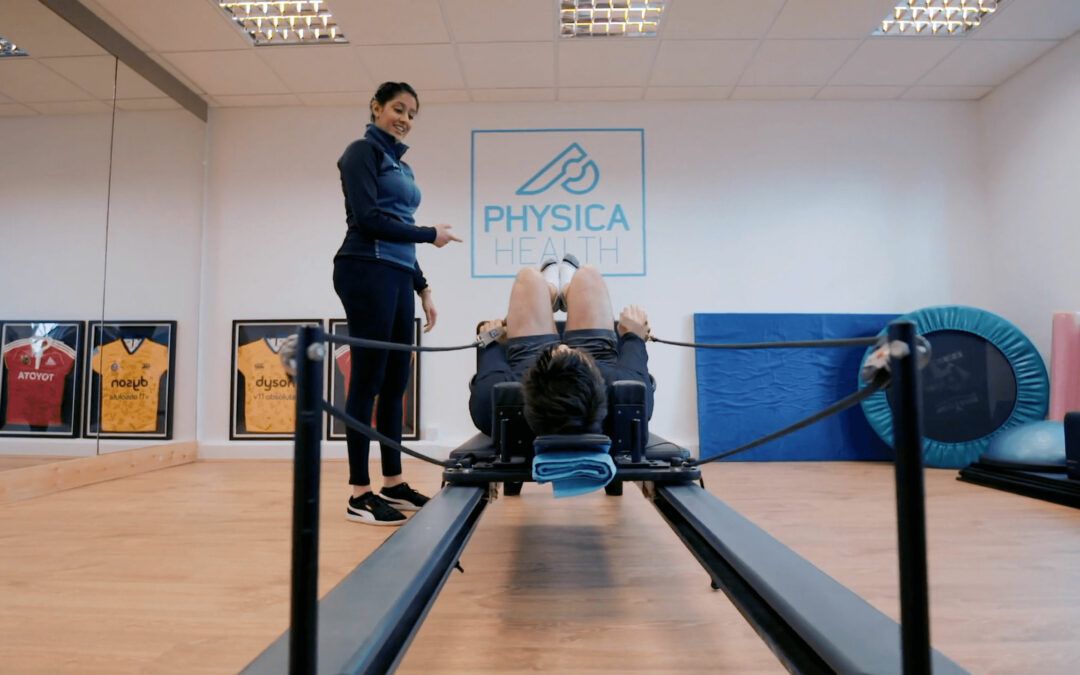
Mar 14, 2024
Introduction:
Injuries can disrupt our lives, casting shadows over our routines and aspirations. Yet, within the challenge lies an opportunity for growth and healing. At Physica Health’s Camberley Physiotherapy Clinic, nestled in the heart of Bagshot, our ethos revolves around guiding individuals through their recovery journey with compassion and expertise. Led by a team of seasoned physiotherapists, including Damien Kelly, Vanesha Patel, and Adam Wright, our Camberley physiotherapy clinic offers a sanctuary for those seeking to reclaim their vitality and mobility after injury.
Comprehensive Care:
Injuries vary in their nature and complexity, demanding a multifaceted approach to rehabilitation. At Physica Health, we believe in addressing the root cause of your ailment rather than merely alleviating its symptoms. Our dedicated team conducts thorough assessments, delving into the intricacies of your condition to develop tailored treatment plans. Whether you’re grappling with the aftermath of a sports-related mishap, grappling with workplace strain, or navigating the challenges of a chronic ailment, we’re committed to guiding you towards a sustainable recovery.
Tailored Treatment Plans:
One size does not fit all in the realm of rehabilitation. Recognising this, our Camberley clinic prides itself on crafting bespoke treatment strategies tailored to your unique needs and aspirations. During your initial assessment, our physiotherapists will delve into your medical history, perform comprehensive evaluations, and engage in collaborative discussions to understand your goals. Drawing upon a rich tapestry of evidence-based practices, from manual therapy techniques to targeted exercises and modalities such as shockwave therapy, we tailor each session to accelerate your journey towards optimal wellness.
Expertise in Action:
Our team embodies a blend of expertise, compassion, and unwavering dedication to our patients’ well-being. Damien Kelly, renowned for his proficiency in sports physiotherapy, brings invaluable insights gleaned from working with athletes across diverse disciplines. Whether you’re an aspiring amateur or a seasoned professional, Damien’s guidance will empower you to transcend limitations and excel in your chosen field. Vanesha Patel, specializing in women’s health physiotherapy, offers a safe space for individuals navigating the complexities of pelvic health and postpartum recovery. Adam Wright’s holistic approach to musculoskeletal rehabilitation emphasises empowerment and education, equipping patients with the tools to reclaim agency over their bodies and lives.
Convenient Location:
Located mere moments away in Bagshot, our clinic epitomises accessibility and convenience. We understand that seeking healthcare services can be daunting, particularly amidst the tumult of recovery. Thus, we’ve endeavored to cultivate an environment that fosters comfort, safety, and ease of access. Whether you’re a resident of Camberley or neighbouring locales, our doors are open, welcoming you to embark on a transformative journey towards restored vitality and resilience.
Conclusion:
Injuries may dim our spirits momentarily, but they need not define our trajectories. With Physica Health’s Camberley physiotherapy clinic as your steadfast ally, you can rest assured that brighter days lie ahead. Our team of seasoned physiotherapists stands ready to guide you through the labyrinth of recovery, offering expertise, compassion, and unwavering support every step of the way. Embrace the opportunity to reclaim your vitality, rewrite your narrative, and emerge stronger than ever before. Schedule your appointment with us today and embark on a journey towards holistic wellness and renewed vigor.
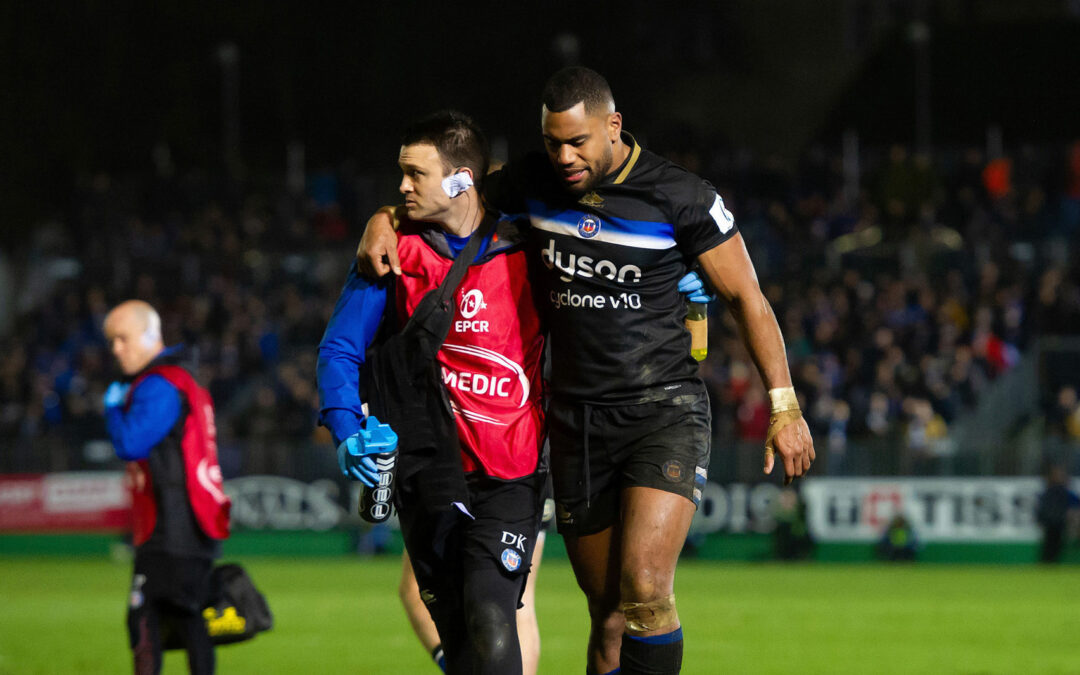
Jan 11, 2024
In the dynamic world of sports, injuries are an inevitable part of an athlete’s journey. Physica Health Sports Injury Clinic, situated in the heart of Bagshot, Surrey, emerges as an unparalleled centre of excellence in sports injury rehabilitation. With an exceptional team led by clinical director Damien Kelly, along with physiotherapists Vanesha Patel and Adam Wright, this clinic is redefining the standards of sports physiotherapy in the Camberley and Surrey area. Let’s delve into what makes Physica Health a go-to destination for athletes striving to recover and enhance their performance.
Elite Experience: Damien Kelly’s Rugby Legacy:
At the core of Physica Health’s success is Damien Kelly, a seasoned professional who has left an indelible mark on the rugby world. With stellar four-year stints as first team physiotherapist for both Bath Rugby and Wasps Rugby respectively, Damien brings a wealth of experience in handling the intricate needs of elite athletes. His journey extends beyond rugby, having worked in the high-speed world of Formula 1, where he regularly travels with F1 driver Esteban Ocon and professional golfers in the PGA and LIV tours. Damien’s multifaceted expertise is a cornerstone of Physica Health’s ability to address a broad spectrum of sports injuries.
Adam Wright’s Football Pedigree:
Physiotherapist Adam Wright, another vital member of the team, boasts an extensive background as the first team physiotherapist for the professional football team QPR. Adam’s experience in rehabilitating elite footballers from injury back to peak performance aligns seamlessly with the clinic’s commitment to comprehensive sports injury care. His skills contribute significantly to the clinic’s holistic approach, ensuring athletes receive tailored rehabilitation programs tailored to their specific needs.
Vanesha Patel’s Olympic and Netball Expertise:
Completing the trio of Sports Physiotherapists is Vanesha Patel, whose resume sparkles with experiences from the London Olympics and international netball. Vanesha’s exposure to high-stakes sporting events and her international netball involvement underscore her ability to understand and address the unique demands of elite athletes. Her presence at Physica Health adds a layer of depth to the clinic’s holistic approach to sports physiotherapy.
Holistic Rehabilitation and Performance Enhancement:
Physica Health distinguishes itself by offering a comprehensive approach to sports injury rehabilitation. Specialising in guiding athletes from post-surgery recovery to peak performance, the clinic employs objective data to inform progress and return-to-play decisions. With a focus on identifying and addressing weaknesses, the team utilises strength and conditioning expertise to ensure athletes return stronger, faster, and fitter than ever before.
State-of-the-Art Equipment for Optimal Care:
The clinic’s commitment to excellence is further reflected in its state-of-the-art facilities. Physica Health is equipped with cutting-edge tools such as Keiser squat and cable machines, Watt Bike, weights, and a Pilates reformer. One standout feature is the state-of-the-art shockwave machine, a powerful tool effective in treating stubborn tendinopathies and chronic plantar fasciitis issues.
Conclusion:
In the competitive arena of sports injury clinics, Physica Health Physiotherapy in Bagshot, Surrey, stands out as a beacon of excellence. With a team of experienced professionals, a commitment to holistic care, and state-of-the-art facilities, this clinic is the go-to destination for athletes aspiring to not only recover from injuries but also to elevate their performance to new heights. Whether you’re seeking top-notch sports physiotherapy in Bagshot, Camberley, or beyond, Physica Health is the trusted partner on your journey to optimal health and athletic excellence.
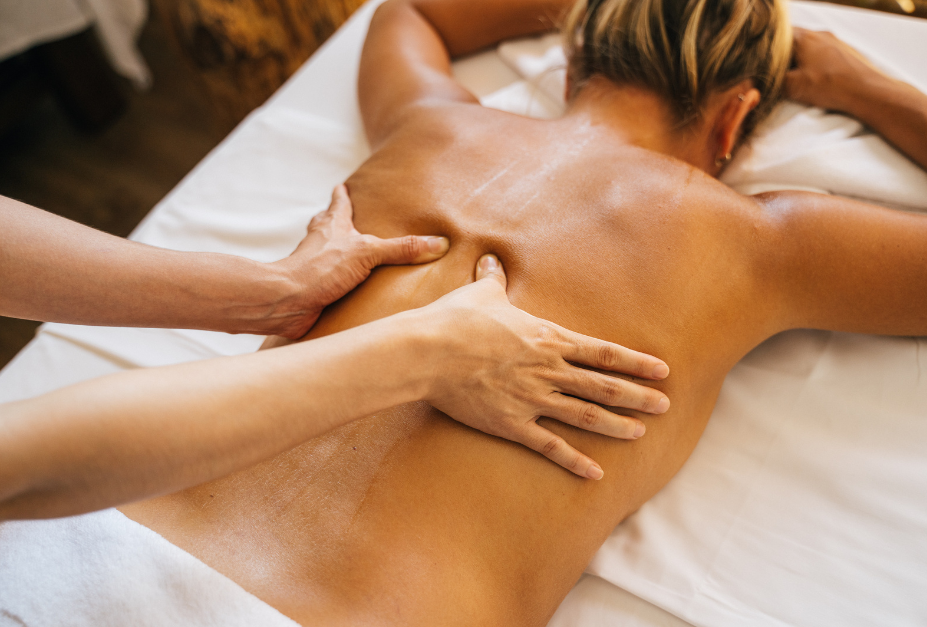
Dec 27, 2023
Back pain is a common ailment that can affect individuals of all ages and lifestyles. Whether you’re an athlete pushing your body to the limits or someone who spends long hours at a desk, back pain can be debilitating. While there are various approaches to managing and alleviating back pain, sports massage has emerged as a highly effective and holistic solution. In this blog post, we’ll explore five ways sports massage can help relieve back pain.
- Improved Circulation: Sports massage focuses on manipulating and kneading soft tissues, such as muscles and tendons, which can enhance blood circulation. Increased blood flow delivers vital nutrients and oxygen to the affected areas of the back, promoting faster healing and reducing inflammation. This improved circulation also helps flush out toxins that may contribute to pain and stiffness.
- Muscle Relaxation: Tight and tense muscles are a common cause of back pain. Sports massage targets muscle knots and trigger points, encouraging the release of tension and promoting muscle relaxation. By addressing muscle tightness, sports massage can contribute to improved flexibility and range of motion, reducing the likelihood of strains and discomfort.
- Enhanced Flexibility: Stiffness in the back often results from a lack of flexibility in the surrounding muscles. Sports massage incorporates stretching techniques that can help improve flexibility and joint mobility. This increased range of motion not only alleviates existing back pain but also reduces the risk of future injuries by ensuring that the muscles and joints move more freely.
- Stress Reduction: Stress and tension can manifest physically in the form of muscle tightness and discomfort. Sports massage not only targets the physical aspects of back pain but also addresses the psychological components. The relaxation induced by massage triggers the release of endorphins, the body’s natural painkillers, promoting an overall sense of well-being and reducing stress-related back pain.
- Posture Improvement: Poor posture is a significant contributor to back pain, especially in today’s sedentary society. Sports massage can help correct muscle imbalances and realign the body, promoting better posture. By addressing the root causes of poor posture, sports massage provides long-term relief from back pain and reduces the risk of its recurrence.
In conclusion, sports massage offers a multifaceted approach to alleviating back pain by addressing both the physical and psychological aspects of discomfort. If you’re seeking relief from back pain, consider incorporating sports massage into your wellness routine.
Ready to experience the benefits of sports massage for yourself? Visit Physica Health Physiotherapy in Bagshot for personalized care and expert massage therapy. Call our clinic at 01276916346 or book your appointment online at www.physicahealth.co.uk. Take the first step towards a pain-free and healthier back today!

